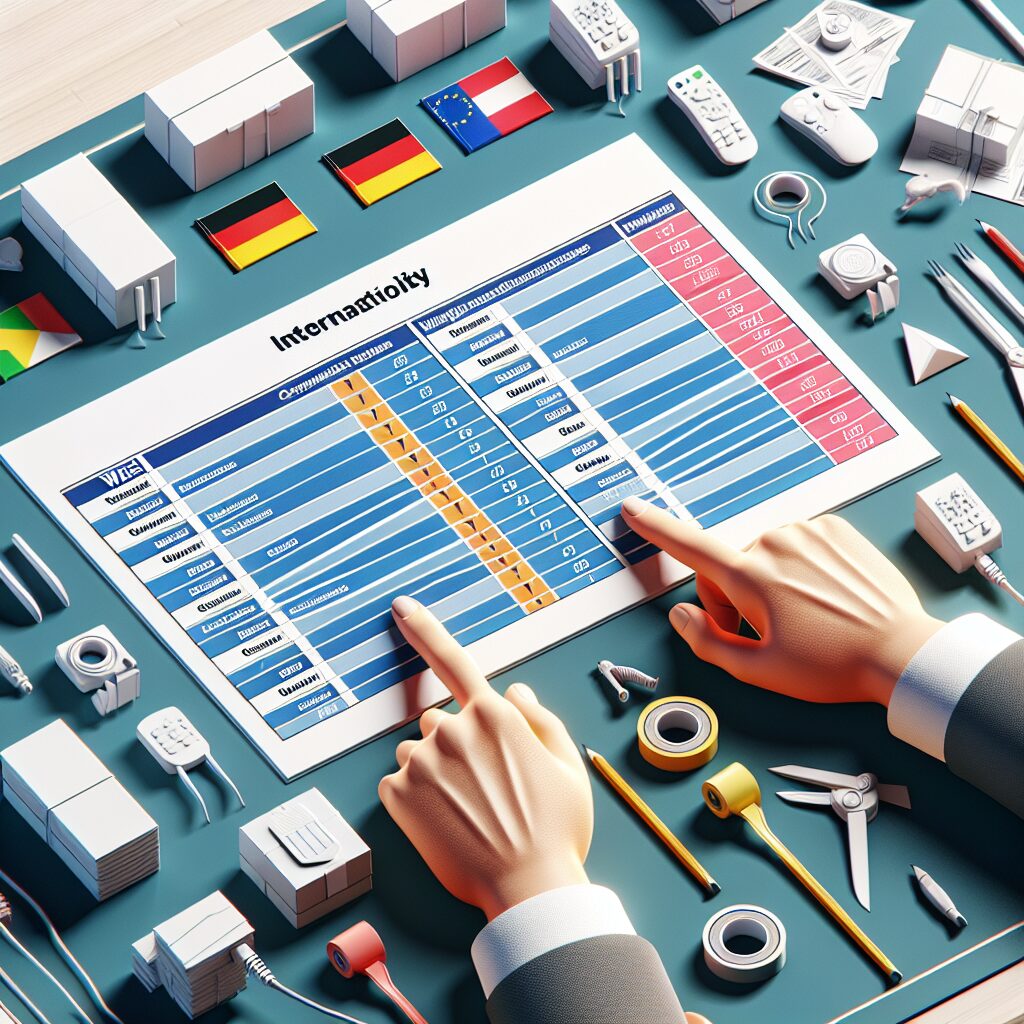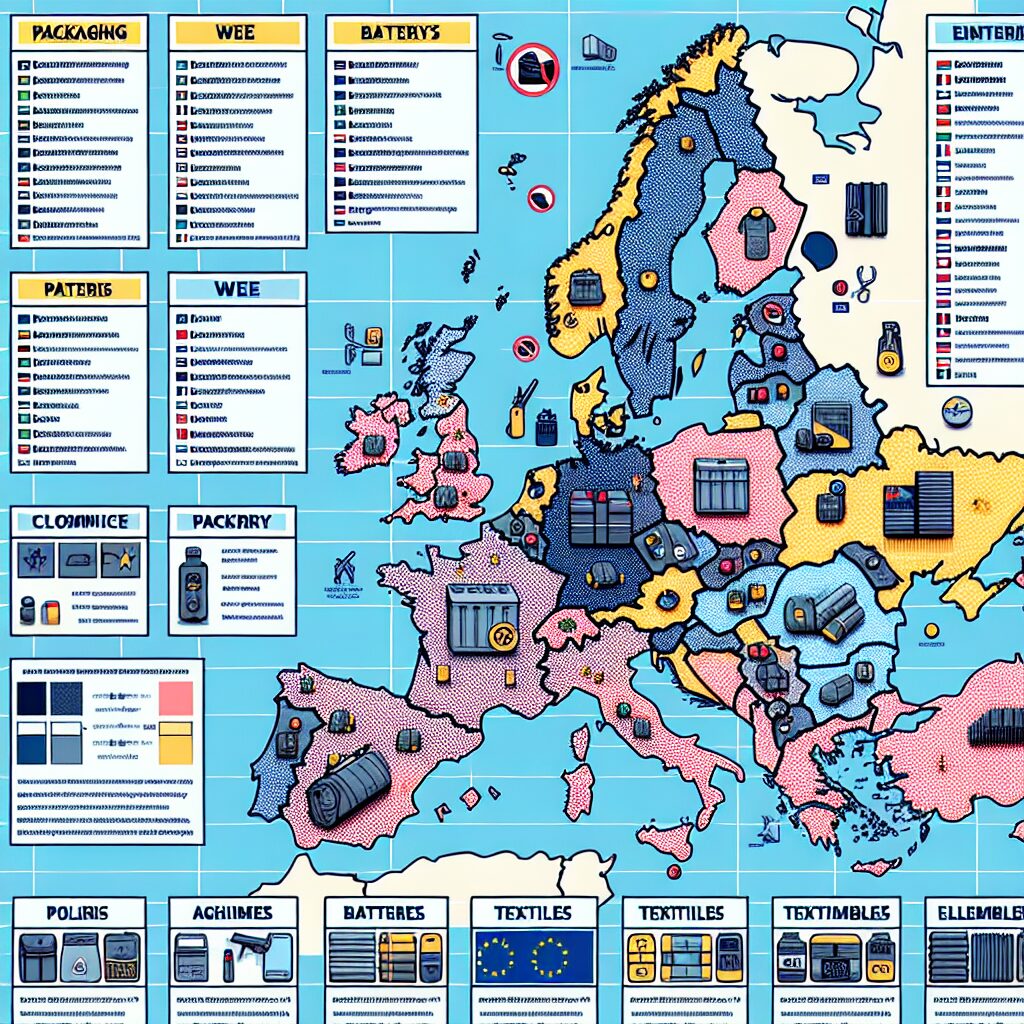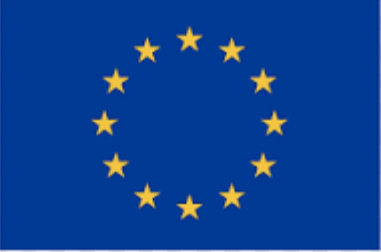Introduction: Why WEEE Compliance is Critical for Amazon Sellers
If you sell electrical or electronic goods in the European Union, WEEE compliance is more than just a box to tick — it’s a legal requirement with direct consequences for your business.
In 2025, the EU and marketplaces like Amazon are stepping up enforcement. Sellers who fail to provide valid WEEE registration numbers risk having their listings removed, accounts suspended, and even facing fines from national authorities.
This guide covers everything you need to know about WEEE — what it is, why it matters, and how to comply quickly and affordably using Eldris’ automated system.
What is WEEE Compliance?
WEEE stands for Waste Electrical and Electronic Equipment. It’s an EU directive designed to reduce electronic waste by making producers responsible for the collection, recycling, and environmentally safe disposal of electronic products.
If your products require electricity to function — whether they plug into the wall, use batteries, or rely on an external power source — they likely fall under WEEE rules.
Examples include:
- Power tools and small household appliances
- Audio equipment and consumer electronics
- IT and telecoms equipment (laptops, routers, headsets)
- Lighting products (lamps, LED strips, smart bulbs)
- Toys or leisure products with electrical components
Who is Considered a “Producer”?
Under WEEE rules, you’re classed as a producer if you:
- Manufacture electrical products for sale in the EU
- Import electrical products into the EU market
- Sell products under your own brand name
- Sell directly to end-users from outside the EU
For Amazon sellers, this means most private-label brands and many resellers are producers, even if they don’t physically manufacture the goods themselves.
Why Amazon Enforces WEEE Compliance
Amazon’s policies align with EU law — if they allow non-compliant products on their platform, they risk penalties. This is why they:
- Ask for WEEE producer numbers for each EU country where you sell
- Suspend or delist products if you fail to provide valid numbers
- Require ongoing proof of compliance
In short: if you can’t show compliance, your listings are at risk.
Penalties for Non-Compliance
Failing to comply with WEEE requirements can result in:
- Marketplace suspension — Amazon may block or remove all affected listings
- Fines up to €100,000 per country — issued by national environmental agencies
- Customs delays or seizures — goods can be held until proof of compliance is provided
- Back payments and reporting obligations — even for past sales
How WEEE Registration Works
Each EU country runs its own WEEE compliance scheme, so there is no single EU-wide registration. You must register separately in every country where you place goods on the market.
Registration Steps:
- Identify target countries — where you sell or ship your goods.
- Select approved compliance schemes — one per country.
- Provide company details — legal name, VAT number, contact info.
- Classify products — by WEEE category and subcategory.
- Estimate annual volumes and weights — required for fee calculation.
- Submit applications — with supporting documentation.
- Pay registration and membership fees — varies per country.
- Receive your WEEE producer number — and membership confirmation.
Ongoing Reporting Obligations
WEEE compliance doesn’t end after registration. You’ll need to submit regular reports on the quantities of electronics you place on the market. This can be:
- Quarterly — common in Germany, France, and other large markets
- Annually — in smaller or lower-volume markets
Reports typically require:
- SKU-level volumes or total units
- Weight by product category
- Adjustments for returns or unsold goods
Missing these deadlines can put your registration at risk and trigger fines.
Why Manual Compliance Slows You Down
Traditional WEEE compliance often involves:
- Hiring a consultant or law firm
- Manually registering in each country
- Emailing back and forth with multiple authorities
- Paying hidden or surprise fees
This process can take weeks or months — time most Amazon sellers don’t have when a compliance deadline or enforcement notice hits.
How Eldris Simplifies WEEE Compliance
Eldris takes the multi-country, multi-scheme complexity and compresses it into one simple, automated workflow:
- Choose your countries and SKU tier — pricing is transparent.
- Complete our secure onboarding form — one form covers all countries.
- We handle all submissions — including translations, scheme selection, and authority communication.
- Receive your WEEE numbers and certificates — directly in your Eldris dashboard.
- Stay compliant with automated reporting — we track deadlines and send reminders before each one.
Key Benefits:
- Speed — registrations submitted within days
- Clarity — no hidden fees, flat onboarding rates per country
- Scalability — easily add countries or products
- Marketplace-ready — certificates formatted for Amazon and other platforms
Example: Amazon Seller Case Study
A UK-based Amazon FBA seller launched their electronics range into Germany and France in early 2024. Without WEEE registration, Amazon flagged their account and threatened to remove their listings within 14 days.
Using Eldris:
- They completed onboarding in under 20 minutes.
- Eldris submitted registrations to both countries within 24 hours.
- Producer numbers were issued in 6 working days.
- Listings stayed live, and no sales momentum was lost.
The seller now has automated reporting set up for both countries and has since expanded into Italy and Spain without repeating the process manually.
Deadlines for 2025
Some EU countries have updated enforcement cycles starting in Q4 2025. Waiting until then could mean:
- Missing application windows
- Paying late registration penalties
- Facing Amazon delistings right before peak season
Action Checklist for Amazon Sellers
- ✅ Map all EU countries where you sell electronics
- ✅ Gather company registration and VAT details
- ✅ Identify WEEE product categories for each SKU
- ✅ Estimate volumes/weights for the next year
- ✅ Start registrations early to avoid enforcement blocks
The Cost of Waiting vs. Acting Now
Cost of waiting:
- Lost sales from suspended listings
- Higher emergency consultant fees
- Stress and distraction from growing your business
Cost of acting now:
- A one-time onboarding fee per country
- A predictable monthly fee for reporting
- Peace of mind knowing compliance is handled
Final Call to Action
Don’t wait for Amazon to force your hand. WEEE compliance is a legal obligation — but it doesn’t have to be slow or stressful.
With Eldris, you can:
- Get registered in days, not weeks
- Keep your listings live and your account safe
- Expand into new EU markets with ease










